- Exhibition & Events
- Mithila Cosmos: The Cycles Of Time by SC Suman
Mithila Cosmos: The Cycles Of Time by SC Suman
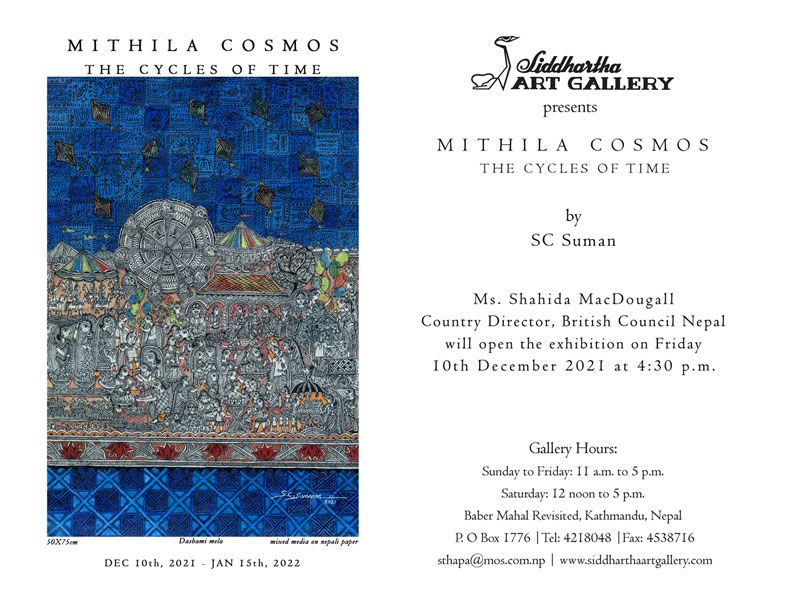
READING THE WORLD THROUGH THE MITHILA LENS
Are both perhaps present in time future,
And time future contained in time past.
If all time is eternally present
All time is unredeemable.
What might have been is an abstraction
Remaining a perpetual possibility
Only in a world of speculation.
What might have been and what has been
Point to one end, which is always present.
Taken from Four Quartets by TS Eliot
-
WHAT: Mithila Cosmos: The Cycles Of Time
-
WHEN: Dec 10, 2021 to Jan 15, 2022
-
WHERE: Siddhartha Art Gallery, Babermahal Revisited
Nepal came to a standstill in March 2020, when a strict lockdown was imposed to curb the rising cases of COVID-19. For most, it meant being cooped up inside their homes, online school, or working from home. But for SC Suman, it was an ideal time to sit in his studio and paint. And that’s exactly what he did. He painted the stresses and experiences of the pandemic away. And now, these works are hung on the walls of the Siddhartha Art Gallery, ready to be shown to the rest of the world.
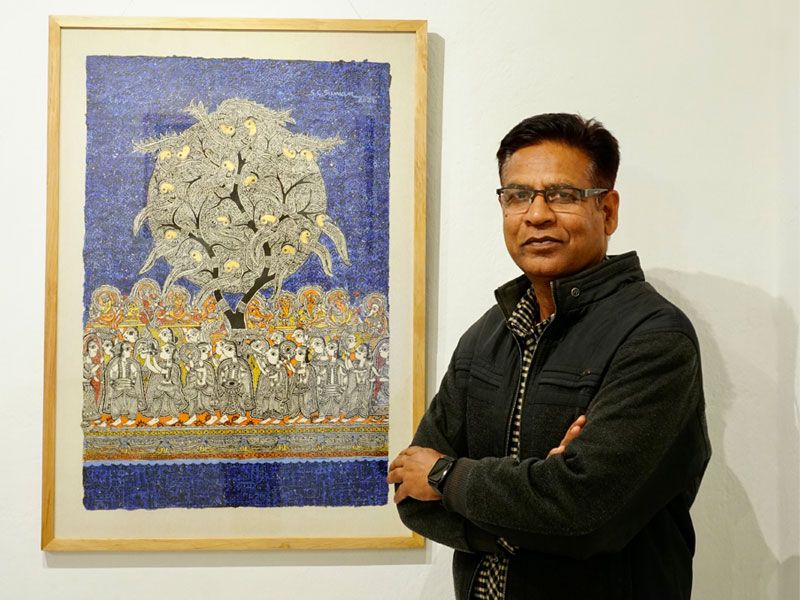
SC Suman is a household name in Nepal’s art community—credited with bringing Mithila Art to Kathmandu and the international community. The Mithila artform emerged from the ancient, rich Kingdom of Mithila—mentioned in the epic The Ramayana as home to Sita (Lord Ram’s consort) and her father King Janak. The art form has been able to survive history (and its countless changes) and is still practiced in today’s age. Its survival can be largely credited to the Maithil womenfolk who learn the skills from their mothers and grandmothers for generations.
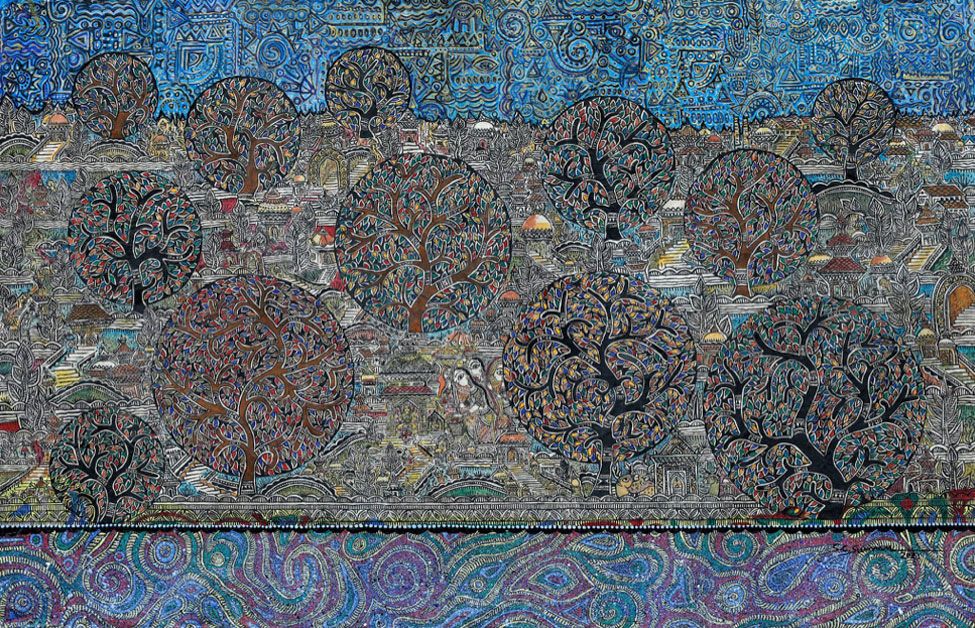
Gauri Puja in The Ramayana
56X36 inches
SC Suman
Suman, who hails from Siraha, was largely inspired by his grandmother (and other women in his village) to take up Mithila art. He was fascinated by the Kohbar paintings drawn on the walls for newlywed couples during their wedding night and the Aripan—a floor painting drawn with rice paste on mud floors in the house during Deepawali. Eventually, Suman decided to continue his grandmother’s legacy and take up the tradition of this uniquely distinct style of art.
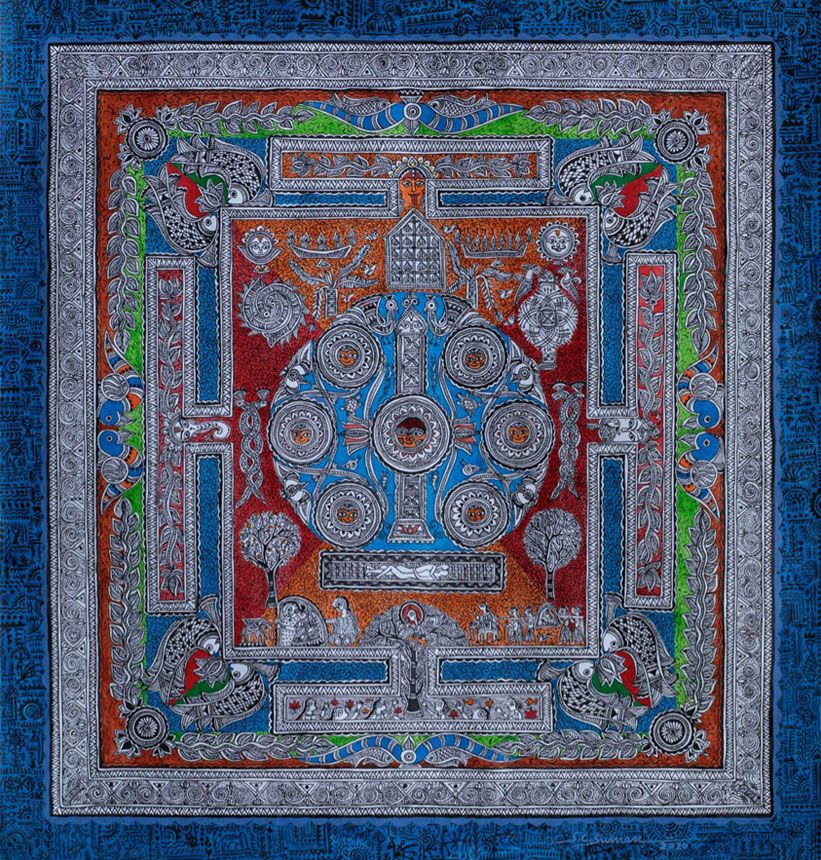
Kobhar Ghar
29X43
SC Suman
‘The Cycles Of Time’ is the fifth addition to Suman’s anthology ‘Mithila Cosmos’. Previously, within ‘Mithila Cosmos’, he has done ‘Mithila Cosmos’ in 2007, ‘New Narratives’ in 2011, ‘Circumambulating The Tree Of Life’ in 2013, and ‘Songs Of Innocence And Experience’ in 2019.
The Different Facets Of Time
The title of the exhibition ‘The Cycles Of Time’ alludes to the cyclical nature of time within the Vedic school of thought. Time is regarded as circular, divided mainly into four ages—Satya, Treta, Dvapar, and Kali. The yugas are said to degenerate as each yuga passes, with the subsequent yuga becoming more corrupt, evil, and chaotic than the former.
Suman has painted the ages or yugas separately, showcasing stories, motifs, signs, and symbols that correspond to each of the yugas. The Satya yuga, a time of prosperity and truth shows everything in harmony. Treta yuga tells the story of the Ramayana and in turn, of Lord Ram’s righteousness. Dvapar yuga is filled with Krishna lila— the tales of Lord Krishna’s mischiefs as well as victories.
The final and the present yuga (before the cycle begins all over again) is the Kali yuga. Suman shows popular Nepali temples along with famous monuments from all over the world—from the Taj Mahal to the leaning tower of Pisa all clustered together in a tapering mountain. Animals are seen being killed and sold, the trees are cut to make elaborate chairs. “The chairs symbolize our greed for power. I wanted to show that in Kali Yuga people become selfish as they hoard money, power, and resources,” he says.
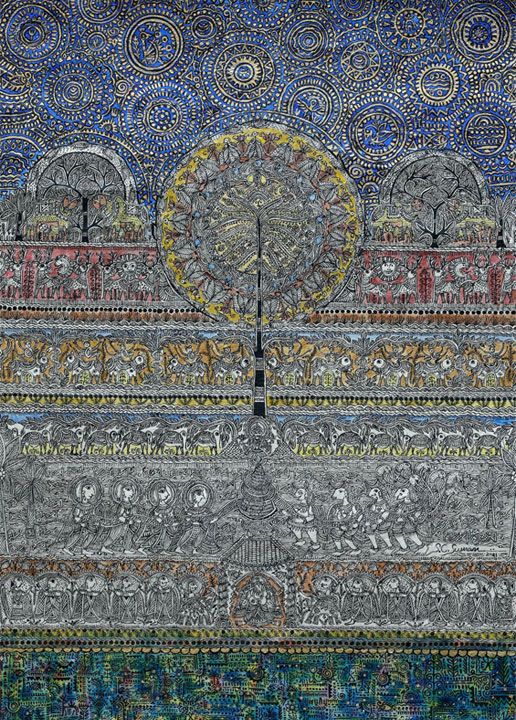
Satya Yuga
29X43
SC Suman
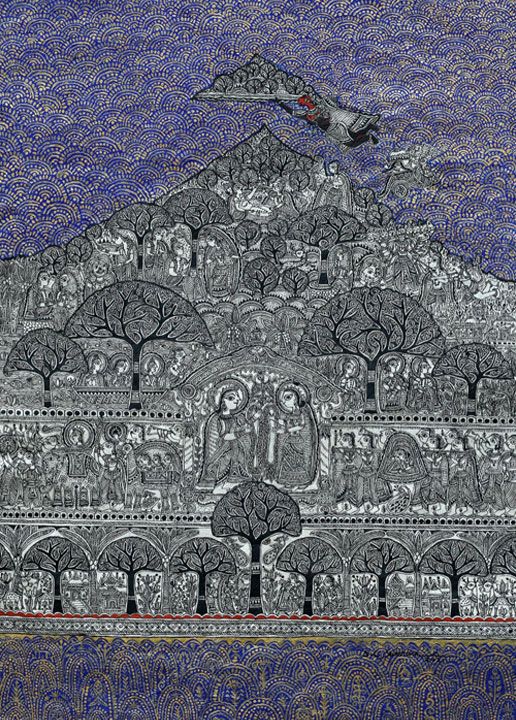
Treta Yuga
29X43
SC Suman
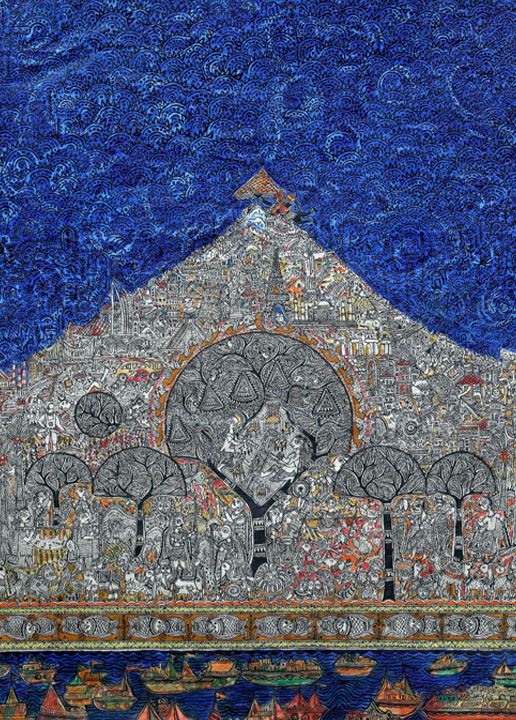
Kali Yuga
29X43
SC Suman
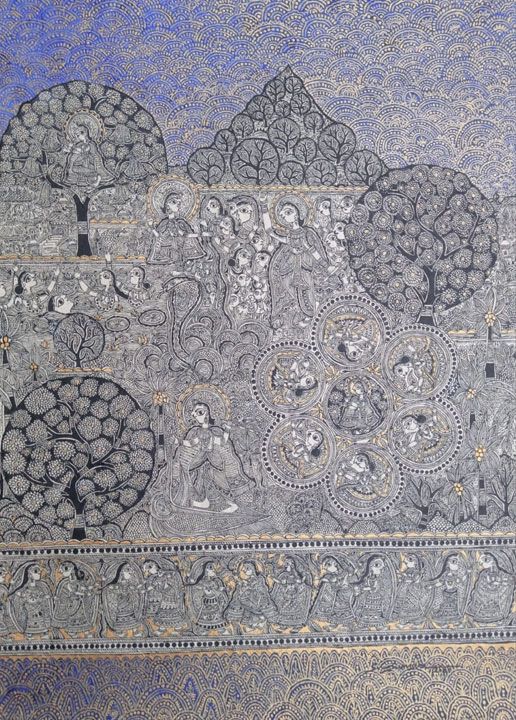
Dvpara Yuga
29X43
SC Suman
Intertwined With Nature
The Mithila art genre is deeply rooted in nature. Every aspect of nature—from the plants, trees to the animals—are some form of motifs alluding to complex ideas about life and human experience. Prof. Beerendra Pandey writes, “Suman’s paintings reflect images of a myriad of plants and life forms of the Terai which encapsulate a host of meanings. For instance, the lotus as the seat of the unblemished and pure feminine form, bamboo as a lineage, roots and male form, and the kadamba tree as a motif for love.” Similarly, fishes and crocodiles symbolize fertility, turtles are signs of lover’s reunion and stability, parrots signify intelligence, and peacocks are metaphors for beauty.
Artworks like ‘Ecological Balance’, ‘Wildlife And Nature in Balance’, ‘The Love Rasa In Nature’ and ‘Aesthetic Sentiments In Nature’ all pay homage to natural surroundings. The Kalpavriskhya—a wish-granting tree—is a continuing motif in his work, shown to be thriving and blossoming circularly in most of his paintings within this series. The Kalpavriksha tree is a focal point of an intricate Mithila aripan.
Thus, it’s easy to see that Suman’s paintings are a continuous exploration of a deeply rooted relationship with nature.
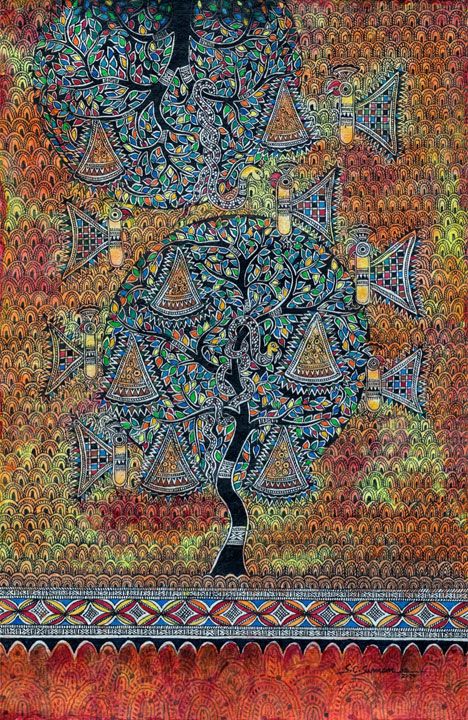
Ecological Balance in Nature
20X30
SC Suman
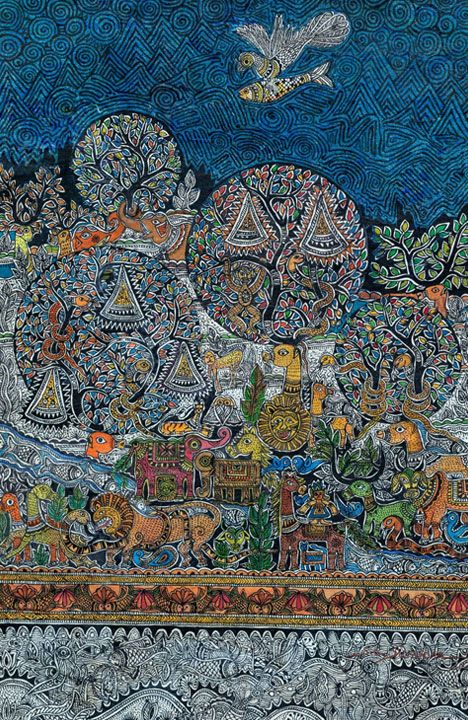
Wildlife and Nature in Balance
20X30
SC Suman
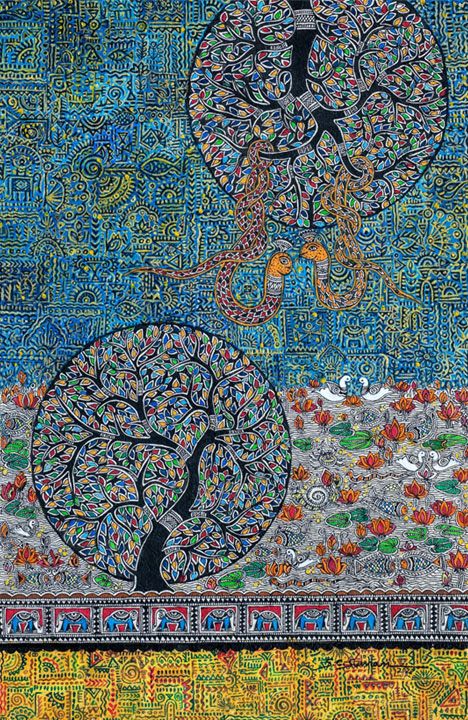
Aesthetic Sentiments in Nature
20X30
SC Suman
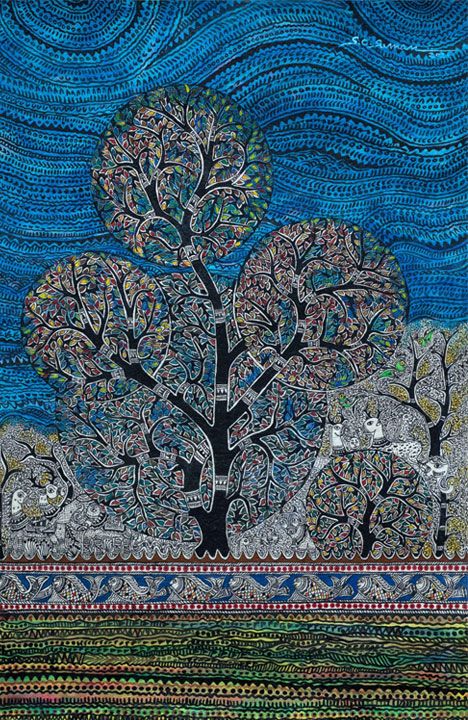
The Love Rasa in Nature
20X30
SC Suman
Telling Contemporary Stories Through A Traditional Medium
Even though Suman works under the traditional genre, he doesn’t just stick to telling the stories of the past. A lot of Suman’s pieces in this exhibition are about extremely relevant issues—mainly the COVID-19 pandemic. With ‘Scapegoating Bats For COVID’, he questions the cynicism that was pointed towards bats for being the root cause of the pandemic. Suman believes that bats were simply used as ‘scapegoats’ and that people failed to realize other issues that have been building up the risks for the pandemic, namely habitat destruction, depletion of natural resources, overpopulation, etc.
Three of his works ‘Lockdown Lessons I’, ‘Lockdown Lessons II’ and ‘COVID Lessons’ are also refections he’s made during the time of the pandemic. ‘Lockdown Lessons I’, shows people locked inside their houses, their faces covered with masks unable to make contact with the outside world. ‘Lockdown Blues II’, on the other hand, shows the outside—the roads, the buildings, the temples—devoid of any human life, looking haunted.
As for ‘COVID Lessons’, it satirizes the import of oxygen cylinders via airplanes while trees—that naturally give out oxygen—are cut (in large numbers) day by day in the name of economic development.
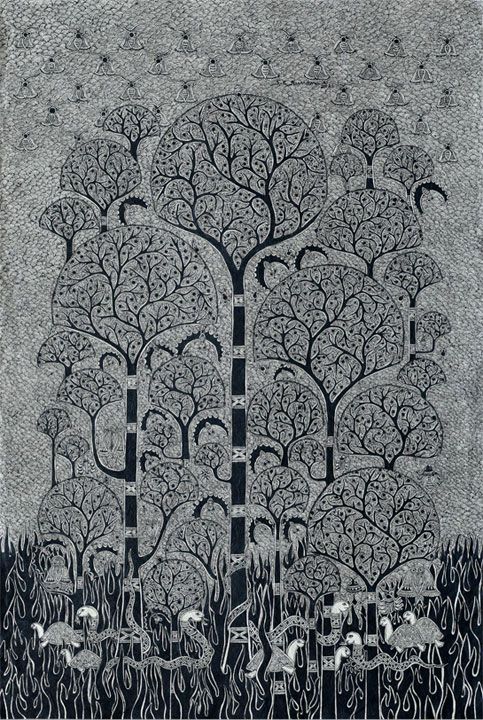
Scapegoating Bats for COVID
36X56
SC Suman
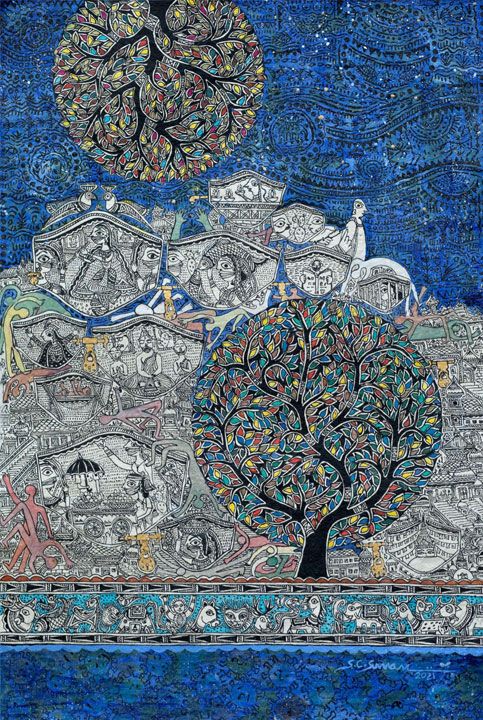
Lockdown Blues I
20X30
SC Suman
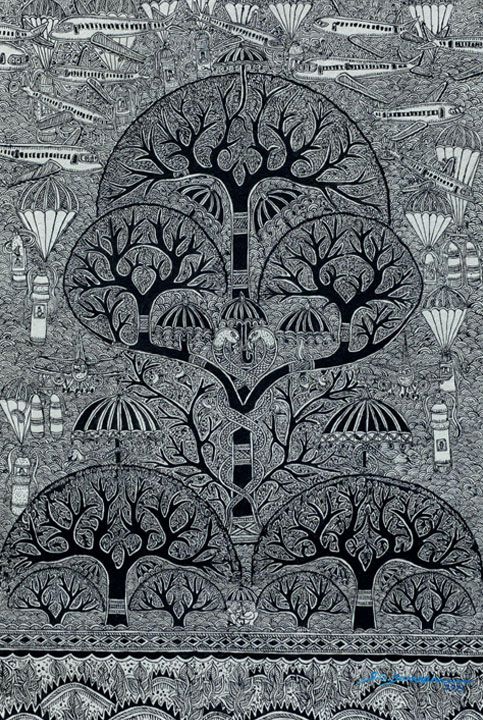
COVID Lessons
20X30
SC Suman
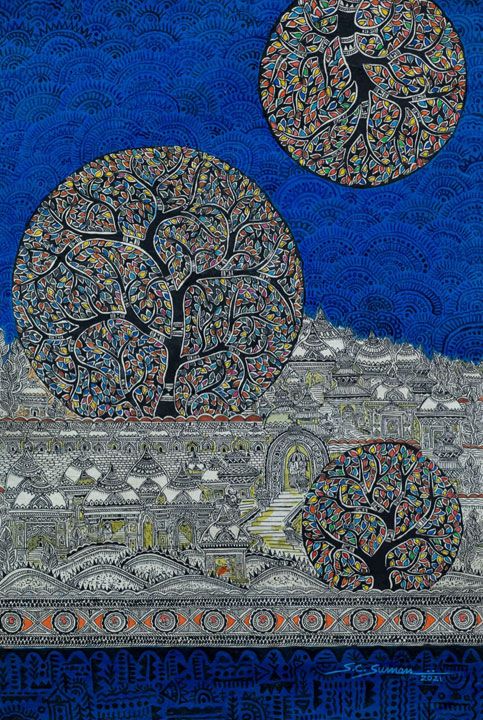
Lockdown Blues II
20X30
SC Suman
Concluding The Series
Suman’s work may feature some bleak narratives like the Kali Yuga or COVID-19 but there are equally buoyant portrayals of human life in his work. Artworks like the Chhath Puja, Ganesh Puja, and Dashami Mela, show a vibrant ambiance where people are have come together in celebration. Sangeeta Thapa, founder/director at SAG writes, “But not all is doom and gloom. Suman’s narratives also focus on the coming of age, awareness, erotic desire, love, and the harmony of nature.”
Lastly, in ‘Mithila Cosmos: The Cycles Of Time’, Suman’s works employ the great artistic traditions of the Mithila genre to sketch not only the mystical stories within the Hindu mythology but also the present trials and tribulations of mankind.
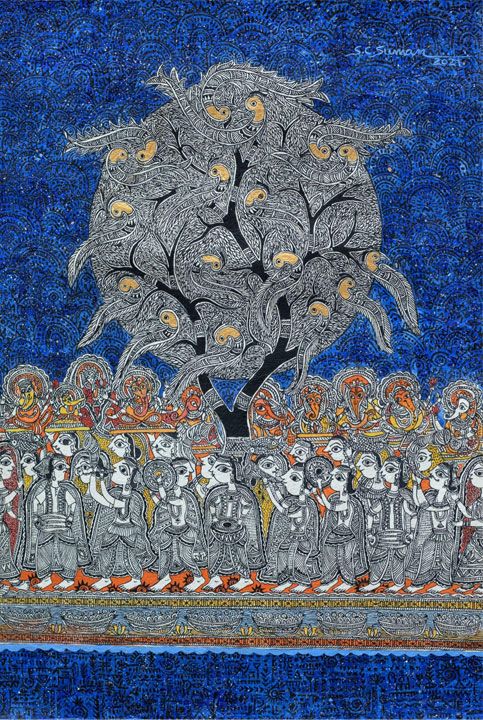
Ganesh Puja Festival
20X30
SC Suman
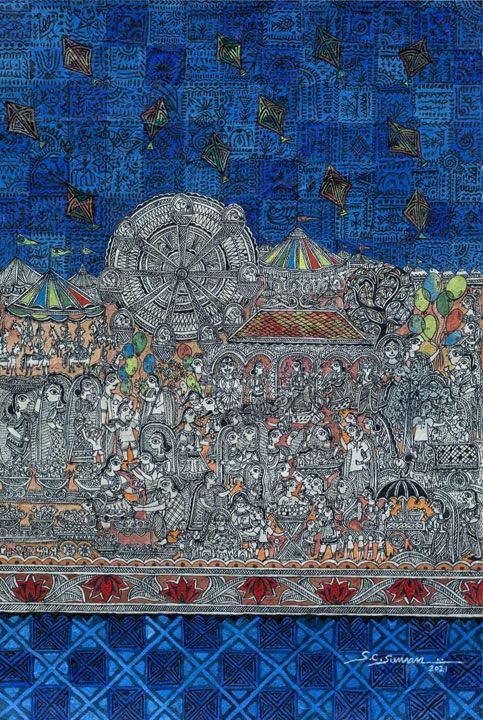
Dashami Mela
20X30
SC Suman
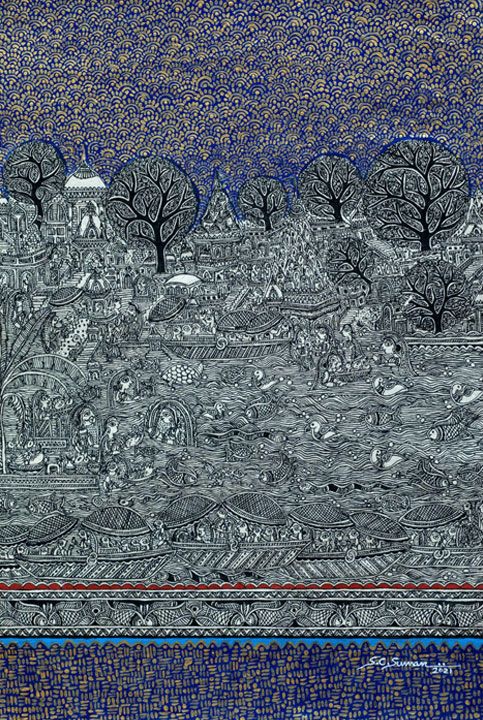
Chhath Puja
20X30
SC Suman
